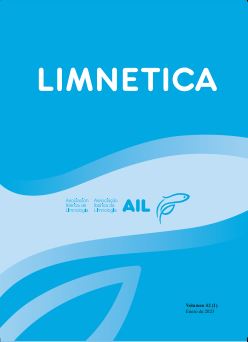Bridging community and metacommunity perspectives in benthic photosynthetic organisms (Serranía de Cuenca, Central Spain)
Resumen
We analysed summer assemblages and the metacommunity structure of benthic microalgae and Cyanobacteria (BMC) living in pristine ecosystems in the Serranía de Cuenca (Central Spain), whose flora is not well-known. Our analyses were focused on both overall samples and some site subgroups (two large catchments, lotic vs lentic environments, plant vs mineral substrates). 379 taxa were recorded, with Diatoms, Chlorophytes and Cyanobacteria being the richest groups. The flora composition depended on conductivity and the percentage of forests in each sub-basin; even so, the composition was spatially homogeneous, reflecting the relatively low variability of the landscape. Taxonomic richness did not differ between inventory subgroups, but it was vulnerable to the somewhat higher values of low concentrations of nitrogen and phosphorus compounds. Two groups of BMC assemblages emerged in the territory: one of cosmopolitan Diatoms and Cyanobacteria, and another of Cyanobacteria, Diatoms and Chlorophytes associated with travertine. The structure of the metacommunity was governed by the contributions of space, catchment features and the local environment (chemical and biological); the relevance of biological factors, which are not usually analysed, was highlighted. Finally, we suggest the joint study of local ecology and metacommunity that is feasible with the many occurrence databases of many benthic organisms. Soon artificial intelligence and new taxonomic tools will allow faster and more comprehensive processing of the huge number of freshwater datasets already in existence, which will be a huge leap in ecological knowledge of benthic assemblages in the coming years.
Descargas
Publicado
Número
Sección
Licencia
Los autores que publican en esta revista están de acuerdo con los siguientes términos:
- Limnetica está bajo una licencia de Creative Commons Atribución-NoComercial 4.0 Internacional.
b. Los autores pueden establecer por separado acuerdos adicionales para la distribución no exclusiva de la versión de la obra publicada en la revista (por ejemplo, situarlo en un repositorio institucional o publicarlo en un libro), con un reconocimiento de su publicación inicial en esta revista.
c. Se permite y se anima a los autores a difundir sus trabajos electrónicamente (por ejemplo, en repositorios institucionales o en su propio sitio web) antes y durante el proceso de envío, ya que puede dar lugar a intercambios productivos, así como a una citación más temprana y mayor de los trabajos publicados (Véase The Effect of Open Access) (en inglés).


